Explore glittering tradition of inlay craftworking techniques in north China’s Inner Mongolia
With exquisite patterns and smooth lines inlaid on it, the silverware featuring the patterns of a parrot, leaves and flowers look just like the original artifacts that belonged to the Tang Dynasty (618-907). According to the craftsman Li Zhongqiang, the reason why he created the replica was that he hoped the charm of the silverware could be appreciated by more people.
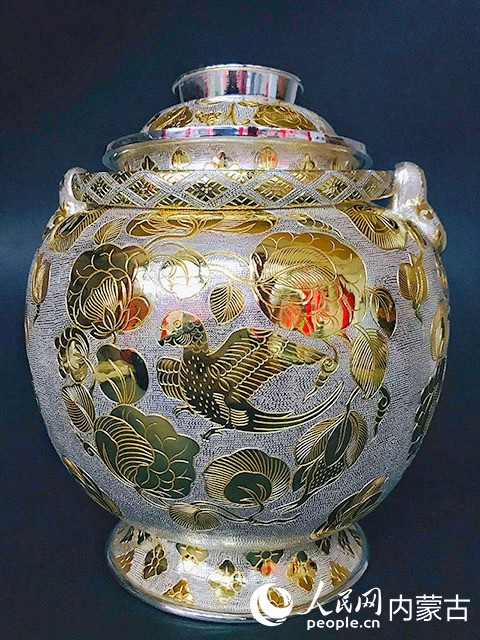
Photo shows an inlay silverware replica featuring the patterns of a parrot, flowers and leaves made by Li Zhongqiang. (People’s Daily Online/Wang Hui)
Li is an inheritor of the gold and silver inlay techniques derived from north China’s Inner Mongolia Autonomous Region. In his eyes, the inlay techniques not only embody the spirit of craftsmanship, but also convey deep cultural connotations.
The Inner Mongolia inlay craft involves a series of techniques, such as beating the metal, carving, drawing patterns, making ornaments to be inlaid on the main body of the object, and inlaying jewelry into the object, among other processes.
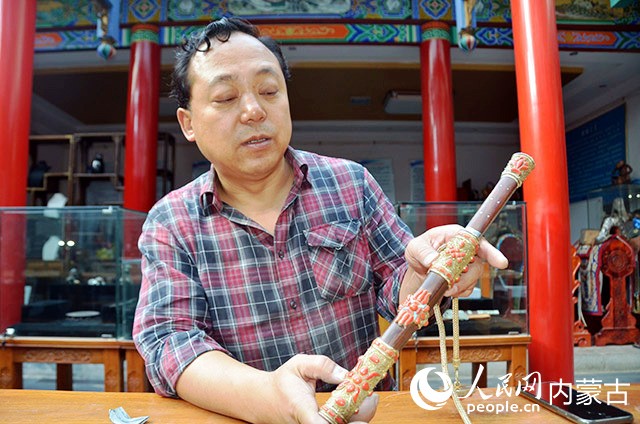
Li Zhongqiang introduces a knife made by him with the use of inlay techniques. (People’s Daily Online/Wang Hui)
Having mastered the inlay techniques as a worker at a local crafts factory, Li later opened up a small workshop, together with his colleagues. “In 2007, we received an order for more than 300 inlay products in the shape of camels and were required to deliver the products within only 18 days. To meet the target by the deadline, we worked day and night. I remember a colleague of mine, who had difficulties breathing, had to use a medical oxygen cylinder while working, and my feet were swollen due to the long hours of sitting still,” Li recalled.
Li nowadays devotes a lot of efforts to innovating the Inner Mongolia inlay techniques. “We made a gold trophy for a competition event at an international equestrian festival held in Inner Mongolia last year. The trophy, featuring a white horse standing on a goblet and having a height of 70 centimeters, was made through the application of 3,900 grams of silver and had four precious stones inlaid on it. It took us 50 days to finish the trophy,” Li said proudly.
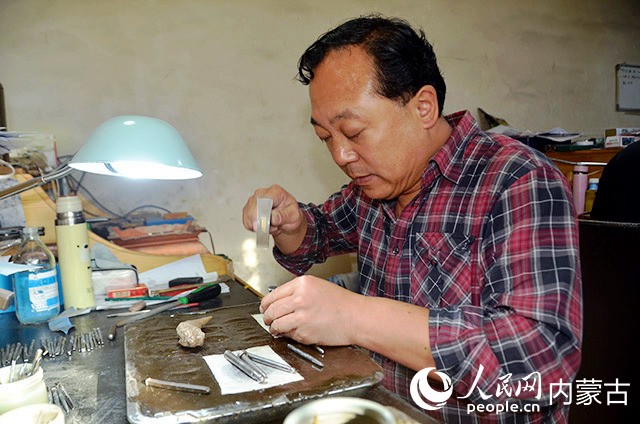
Li Zhongqiang beats a silver sheet atop a mask of paper with patterns drawn on it, with the same patterns being imprinted onto the silver sheet. (People’s Daily Online/Wang Hui)
Li believes that practice makes perfect, saying that it takes at least three years before an apprentice will be able to pick up some basic skills and gain a general understanding of the inlay techniques required for the job. With five apprentices learning the techniques from him, Li hopes that he can carry forward the intangible cultural heritage to future generations.
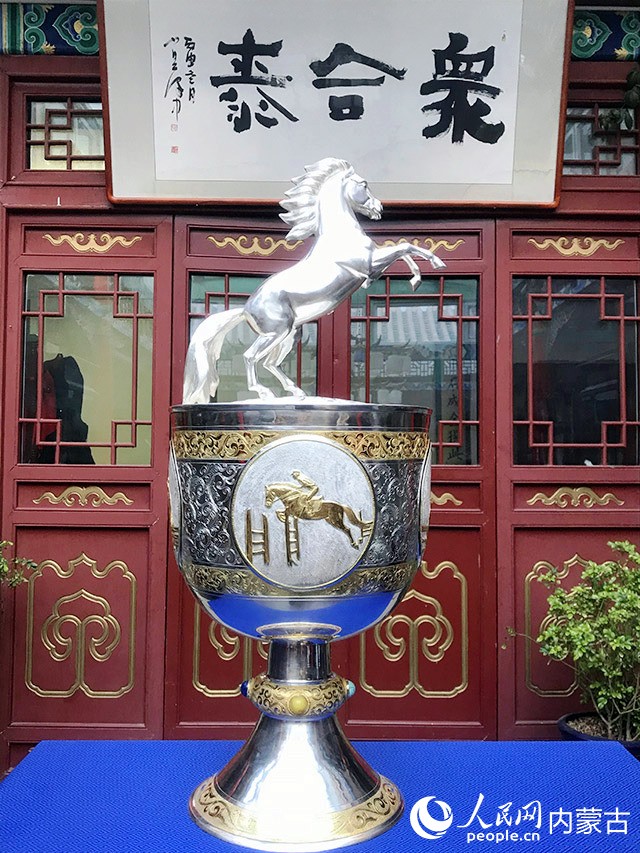
Photo shows a trophy made by Li Zhongqiang and his colleagues for a competition event at an international equestrian festival held in Inner Mongolia last year. (People’s Daily Online/Wang Hui)
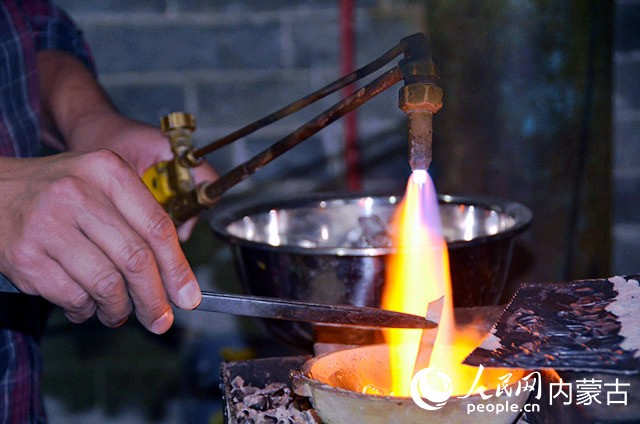
Li Zhongqiang melts a silver bar. (People’s Daily Online/Wang Hui)

Li Zhongqiang produces patterns on a silver sheet. (People’s Daily Online/Wang Hui)

Li Zhongqiang draws patterns. (People’s Daily Online/Wang Hui)
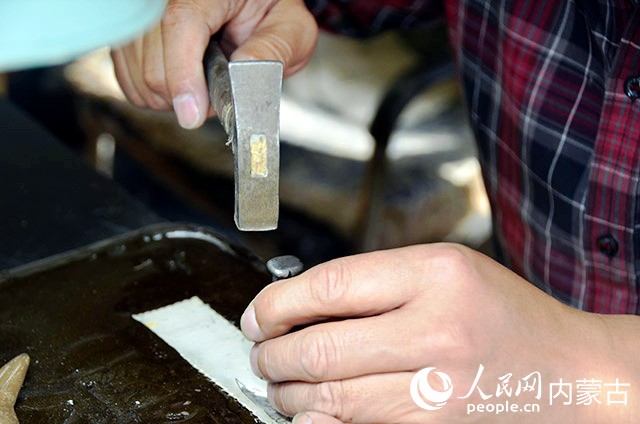
Li Zhongqiang beats a silver sheet atop a mask of paper with patterns drawn on it, with the same patterns being imprinted onto the silver sheet. (People’s Daily Online/Wang Hui)

Li Zhongqiang and his colleague make a trophy. (People’s Daily Online/Wang Hui)
Photos
Related Stories
- Leather carving artist brings his designs to life vowing to protect, pass on traditional craft
- CraftAlive show held in Canberra, Australia
- In pics: inheritor of Taiyuan traditional lacquer craft
- Weaver brings traditional ethnic dyeing crafts to outside world
- Cultural, creative project provides skill training for women in poverty in Guizhou, SW China
- Old inspiration
Copyright © 2021 People's Daily Online. All Rights Reserved.










